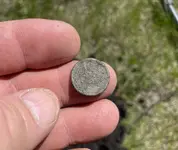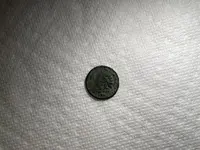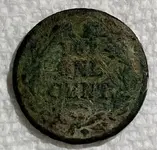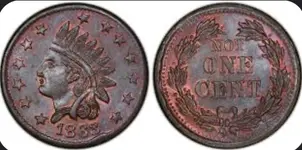The "Not One Cent" Civil War token, specifically the 1863 Indian Head variety, emerged as a form of patriotic protest against the perceived corruption and waste during the American Civil War. These tokens, often made of copper, featured the words "Not One Cent" on the reverse, a direct critique of the extravagant spending on the war effort while widows and orphans struggled. The obverse typically displayed an Indian Head bust and the year 1863, sometimes with inscriptions referencing the excessive cost of war contracts or the need for support for those affected by the conflict.
Here's a more detailed look:
- Purpose:
The tokens served as a form of protest against the government's handling of the war effort, particularly the perceived corruption and extravagance associated with contracts and supplies.
- Design:
They typically featured the words "Not One Cent" on the reverse, contrasting with the obverse, which usually included an Indian Head image, the date 1863, and other patriotic or critical messages.
- Circulation:
These tokens were widely circulated and accepted as currency in some areas, particularly during the Civil War period.
- Legal Status:
The US Congress passed a law in 1864 prohibiting the issue of private coins or tokens, making Civil War tokens like the "Not One Cent" officially illegal.
- Legacy:
Despite their short-lived legality, the "Not One Cent" tokens remain a significant historical artifact, reflecting the public's concerns and frustrations during the Civil War.
- Value:
While the exact number of "Not One Cent" tokens produced is unknown, they are considered rare and valuable collector's items today, with varying prices depending on condition and rarity.









 Thank you for sharing with us !!!
Thank you for sharing with us !!!